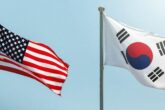May 13, 2010
Managing North Korea: The Need for Coordination between Washington and Seoul
As the hundreds of American and South Korean officials involved in formulating and executing policy towards the Democratic People’s Republic of Korea over the years will attest, theirs is a difficult endeavor. Pyongyang’s actions and intentions are notoriously inscrutable, and the North’s alternating pattern of threats, bluster, and occasional concessions are as treacherous a path to navigate as exists in international relations. The threat posed by Pyongyang’s nuclear program, combined with its proliferation of nuclear and missile technologies, naturally represents a major challenge to the current American and South Korean administrations. The story of the North’s on-again, off-again engagement with multilateral nuclear talks consistently makes waves in the global press. While diplomats seek to steer the peninsula towards greater stability, both nations actively prepare – often beyond the headlines – for possible military conflict with the DRPK and to respond to a potential North Korean collapse.
Given the stakes, coordination between Washington and Seoul on North Korea policy is of singular importance. On the diplomatic front, the United States and the Republic of Korea are critical players in efforts to reduce the threat from the DPRK. While progress in diplomacy requires the support of other nations in the region, there is little chance of success if it does not begin with coordination between the U.S. and the ROK.
Coordinating plans and policies for contingencies north of the demilitarized zone is another core activity of the U.S.-ROK alliance. In the event of conflict or upheaval on the peninsula, it will fall to the ROK and the United States to respond and play the leading role. Yet obstacles to better collaboration remain. Political sensitivities often hamper preparations for the potential collapse of the DPRK. In addition, planned changes in the structure of U.S.-ROK military integration, revolving around the scheduled 2012 transfer of wartime operational control (OPCON) to the ROK, threaten to undermine military coordination efforts at a time when they should be expanded.
This article examines three critical elements of coordination between the U.S. and ROK: diplomacy towards the DPRK, management of the military component of the alliance, and efforts to meet the challenge of a potential North Korean collapse. After explaining the stakes involved and the need for enhanced coordination in each area, the article offers recommendations for policymakers to leverage coordination to achieve a more secure Korean Peninsula and a more resilient U.S.-ROK alliance.
More from CNAS
-
Trump-Lee Summit
Duyeon Kim, adjunct senior fellow at the Center for a New American Security joins CNN to discuss the Trump-Lee Summit and the concerns should U.S. troops pivot to focus on Chi...
By Dr. Duyeon Kim
-
Upcoming Trump-Lee Summit: Modernizing the Alliance by First Reaffirming Long-Standing Principles
Trump and Lee could reaffirm their country’s commitment to the alliance amid shifting security dynamics and agree to modernize it in broad terms to meet the needs of today and...
By Dr. Duyeon Kim
-
South Korea-U.S. Launch Ulchi Drills as Kim Slams Exercise as “Hostile”
With North Korea's growing alignment with Moscow, plus renewed great-power diplomacy following President Trump's latest call with President Putin, the Korean Peninsula is once...
By Dr. Go Myong-Hyun
-
Indo-Pacific Security / Energy, Economics & Security
75 Years Post-Korean War: Can Trust Be Rebuilt Under the New Administration?As President Lee Jae Myung begins his term, he's taking visible steps to reset the tone with North Korea: halting propaganda broadcasts and reemphasizing past military agreeme...
By Dr. Go Myong-Hyun



